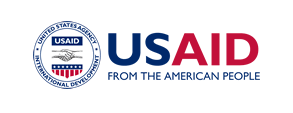The Health Policy Project ended in 2016. Work continued under Health Policy Plus (HP+) until 2022.
Efficiency and Effectiveness

Pierre Holz/UNICEF
Overview
Empowering Countries to Ensure Health Programs Improve Health
National health and HIV programs around the globe are being squeezed as demand for their services rise and the available resources are insufficient to meet those demands. The need to maximize the efficiency and effectiveness— also known as E² — of such programs has never been clearer. To promote effective health systems and successfully target resources to those most in need, governments, local stakeholders, and international partners must maximize efficiency and effectiveness—doing more with less by holding down costs without sacrificing overall impacts.
What We Do
The Health Policy Project (HPP) defines E² as decreasing costs without decreasing the quality or quantity of such health services, or increasing health outcomes without increasing long-term costs. HPP works with government leaders, officials from national-level health institutions, and other local partners to identify ways to maximize investments in programs that improve the health of their people. Our E² approach seeks to optimize the quality and quantity of health services available and help countries take control of the crucial decisions that affect health services and ultimately improve program results without increasing long-term costs.
At the country level, HPP compiles evidence of what has worked in E², models the potential effect of changes to interventions and the mix of strategies, and applies those evidence-based solutions to the program. We help examine current and planned programs looking at cost, efficiencies, proven interventions, and local context. This approach provides clear and tangible actions for maximizing resources and making national health programs more efficient and effective. We also assist country-led programs by providing tools and information to decisionmakers, strengthening their capacity to monitor the efficiency and effectiveness of health programs.
At the global level, we seek to provide evidence demonstrating the importance of using an E² approach. As a result, national governments and international donors can improve their capacity to identify resource gaps and develop sustainable national health programs.
Approach in Action: Kenya
In Kenya, the budget for the country’s HIV program is not fully covered by existing funding levels, so the need to maximize efficiency and effectiveness is crucial. HPP has worked on a pilot project with the National AIDS Control Council (NACC) and the National HIV/AIDS and STD Control Program of Kenya (NASCOP) in order to instill a culture of constant improvement through the use of E² tools. The goal is to develop an E² methodology that helps close the gaps in HIV financing and program results in Kenya, and replicate that approach with other HIV programs.
Read more about HPP activities in Kenya
Publications and Resources
News: Kenya Adopts New Cost-Effective Algorithms to Expand HIV Testing Coverage (10/15/2013)
Integration of Efficiency and Effectiveness in HIV and AIDS Programmes in Kenya: Multistakeholder Meeting Report
This brief report summarizes discussions from a multistakeholder meeting, organized by the Kenya National AIDS Control Council, which focused on allocative efficiency, HIV program efficiency and sustainability, and HIV response evaluations within the context of the Kenya National AIDS Strategic Plan.
Costing Kenya's Current and Proposed HIV Testing and Counseling Algorithms
HPP and the National AIDS and STI Control Programme (NASCOP) conducted this analysis, which highlights the cost savings of three newly proposed algorithms for HIV testing and counseling, and proposes a recommendation for a more cost-efficient algorithm.
Prevention of Mother-to-Child Transmission in Kenya: Cost-Effectiveness of Option B+
This analysis examines the costs associated with implementing a scale-up of the World Health Organization Option B+ to prevent mother-to-child HIV transmission and compares this approach with other strategies. Results show that Option B+ will avert infant and adult infections, but at a significant additional cost.
Preventing Transfusion-Transmissible Infections in Kenya: Steps to Increase the Supply of Screened Blood
This brief summarizes the analysis conducted, presents the cost-benefit results of completely screening the existing blood supply (in terms of infections averted), and outlines cost-efficient steps for increasing the total screened blood supply.
Training and Mentoring Health Workers for the HIV/AIDS Program in Kenya: Efficient Choices in a Revised Skills-Building Strategy
The National AIDS and STI Control Programme (NASCOP), a department of the Ministries of Health, Kenya, is considering a major change to the process in which clinical health workers in the public sector are provided training on HIV/AIDS. This brief provides evidence to support the policy change and is also instructive for training discussions in other vertical programs.

